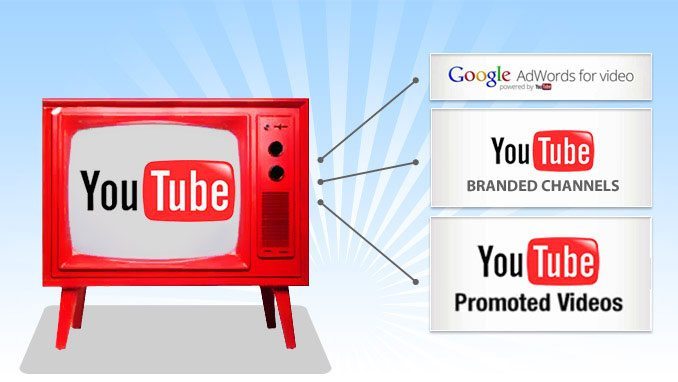Analysts have been saying that it was “the year for mobile” for a long time, and this has created a false expectation. Mobile marketing will evolve just like traditional online marketing did – over time. It will see small surges as technology improves or key demographics change, but overall, we can expect the growth and acceptance of mobile marketing to follow a normal or slightly accelerated acceptance curve, similar to the growth of traditional Internet marketing.
Mobile marketing describes any attempt to appeal to potential customers with some sort of marketing message. Describing it in more concrete terms is difficult, because the term mobile marketing encompasses such a wide variety of activities, including:
- Mobile advertising (in which brands pay to display visual ads embedded within the content of another website)
- SMS and MMS
- Location-based mobile marketing
- Mobile applications
- Mobile search marketing
- Offline marketing in TV, radio and print
- Online marketing on websites, in searches, and with email
We are now building on what we have learned from traditional Web marketing, but then technology will still have to work its way into society, as with every other marketing-laden technology before it. When other technologies were new, many people thought they could live without things such as TV, radio, and Internet. Not until the technologies sufficiently proved their value did they became tightly integrated into our society. There may not be a ìyear of mobile,î but it is definitely the next new marketing opportunity. You must understand it or risk being left behind, because mobile marketing promises to be the most personal, targeted, and actionable marketing available in our time.
What makes mobile marketing something you can’t afford not to master these days is that it is the most personal, targeted, immediate, and actionable form of web marketing around.
Mobile Marketing Is the Most Personal Form of Web Marketing
Perhaps you’ve heard a joke that goes something like “the only thing more personal than a person’s cell phone is his underwear.” Mobile phones are not shared, like traditional phones or desktop computers might be, so they are a uniquely targeted means of communication. The mobile phone is the most personal piece of technology that most of us will ever own.
Mobile Marketing Is the Most Targeted Form of Web Marketing
We can learn a lot about people from the handset they purchase. Business people frequently choose devices that offer the best corporate email solution and allow simple computing. The more mod subscribers in the crowd will choose phones that focus more on applications and aesthetics. Teenagers and the younger crowd will choose phones such as the SideKick, to allow them to stay connected to their friends through text messaging, gaming, instant messaging (IM), and social networks.
Savvy marketers should have a good understanding of the demographic and psychographic indicators of their target market, as well as the top visitors to their website.
Mobile Marketing is a More Immediate Form of Web Marketing
Because our mobile phones are always with us, they make any message that we receive immediately available. And because we use our cell phones to stay connected with the rest of the world, we check them often – sometimes habitually or incessantly – which is also very powerful. This immediacy makes mobile marketing an extraordinary marketing option for last-minute or time-sensitive calls to action.
The mobile nature of the delivery increases the odds that the recipient is already “out and about” and available to act immediately on information.
Mobile Marketing Is More Actionable Than Other Forms of Web Marketing
Mobile phones combine a number of technologies that close the gap between the “real world” that we live in and the “interactive” world that we market in. The convergence of technology in the cell phone has simplified and streamlined many right off the bat actions.
Mobile marketing enables us to make our marketing messages more interactive and actionable, which has a direct impact on the bottom line. It simplifies interaction between the brand and the customer, making it much easier for our customers to interact with our brand. It removes some of the barriers that previously prevented people from responding to our marketing message and from taking the call to action.
Mobile as a Direct Marketing Channel
Direct marketing relies on the availability of our target market to receive and understand our marketing message directly, so mobile marketing falls neatly into this category of marketing. When compared to other types of direct marketing, the mobile phone offers a greatly expanded opportunity for our target market to receive our direct marketing messages. Direct marketing with mobile devices offers a lot of advantages over other types of direct marketing. It is particularly useful because it is cost effective, scalable, targeted, personal, shareable, portable, flexible, interactive, immediate, measurable, effective, actionable, repeatable, and fun.
Mobile marketing also has the power to convert traditional marketing efforts into direct-response campaigns. TV or radio commercials that were previously just one-way broadcast messages – with minimal opportunity for a direct response – can be made interactive and trackable when combined with a mobile call to action. The mobile phone is such a capable response mechanism that all types of direct marketing are lifted to the next level of effectiveness.
Direct Marketing That Is Personal
Mobile marketing is really the most personal direct marketing channel out there because of the variety of communication options it opens for us to reach a specific consumer with a specific message. It leverages the power of standard direct marketing techniques and makes the message consumable and immediately actionable with one device. It offers a bevy of creative marketing opportunities and is also uniquely suited for persona marketing. Persona marketing is based on the idea that your customers can usually be classified into three or four groups, based on their demographic, psychographic (personality, values, attitudes, interests, and so on), and behavioral needs. Customers are grouped based on similarities and are given a name to represent the group.
Direct Marketing That Is Portable
Before mobile email access and text messaging, we relied on our computers for even the simplest text-based communication. If we were in a meeting, in transit, or just away from our computer, we simply could not be reached via text-based communication (short of being passed a note during a meeting). With mobile email and text, even when we’re not really available, messages are still put through and are waiting for us the minute we become available, even if only for a second. We are no longer tied to computers for text-based digital communication.
Direct Marketing That Is Persistent
Before everyone had cellphones, most direct marketing was tied to specific locations. Now, in a world where most adults (as well as many children and teens) have cellphones, we can more easily reach exactly who we are looking for, when we want to market to them. This is because mobile phone numbers are assigned to specific people instead of specific locations, and they are rarely used by more than one person. Mobile phones go with people when they move, go on vacation, or just go out to run errands.
This means we have more opportunity, as marketers, to reach the people we are trying to market to and less risk that our message will be screened out or lost by those who are not the intended recipient. We can spend less time simply trying to reach the person with our offer and more time crafting a persuasive marketing message and a meaningful call to action.
Direct Marketing That Is Intelligent
The data that we can gather about our customers through mobile marketing initiatives also can inform future marketing campaigns. A good CRM system should be used to ensure that the right marketing messages reach the right customers exactly when they are most relevant. Triggered response emails and text messages can be set up to respond to any interaction that the user has with the brand, and they can also be scheduled based on personal specifications that the user indicates in the preference center.
If you are using persona marketing in conjunction with your CRM database, you will be able to predict the communication preferences of new users based on the preferences of others in their persona group. If you can accurately predict a user’s communication preferences, you can begin sending more effective and targeted messages to new customers more quickly – and you eliminate the possibility that they will become frustrated and unsubscribe from your communication lists.





